In the world of leather, ‘patina’ is a bit of a buzzword. And because high-quality leather is at the heart of many of our products, we’ve built up a healthy understanding of it over the years.
Leather patina — demystifying the leather ageing process
Published 18 days ago
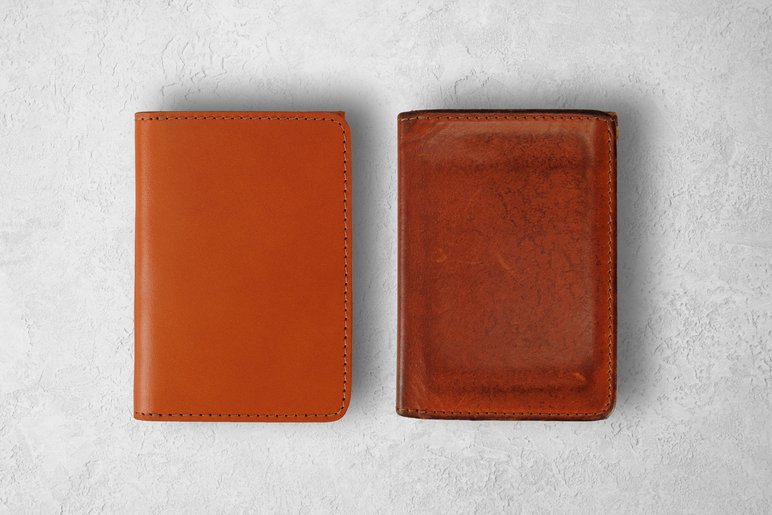
But to the leather novice, patina is an alien phenomenon vaguely associated with vintage black biker jackets. With this in mind (and to give us an excuse to talk about one of our favourite topics) we’ve put together an in-depth exposé on patina.
If questions like, "How does leather age?" or "What colour is patina?" have brought you here, then you’re in the right place.
What is patina leather?
Before we get into the crux, it’s worth noting that patina is not a term exclusively associated with leather. Patina refers to any change in a material’s surface due to natural ageing and exposure to the elements. What do brass, copper, raw wood and even certain types of stones have in common? You guessed it — each is susceptible to developing patina.
One iconic example of patina-in-practice is the Statue of Liberty. In 1886, when ‘Lady Liberty’ was first revealed to the American public, she had a reddish-brown tinge that is typical of copper. Over the ensuing 20 years, the thin copper sheets that make up her external layer reacted with air and water in a chemical process called oxidation, creating the distinctively green coating we see today. Far from damaging the statue, the patina actually protects the copper underneath.
Forming a patina is a standard part of the natural ageing process for premium leather. It involves a gradual change in the leather’s physical properties. Aged leather goods have greater depth when it comes to colour and texture; they often possess a subtle sheen and become increasingly supple.
Yet part of what makes leather patination so interesting is that it is also unpredictable and distinct — very much the product of its particular environment.
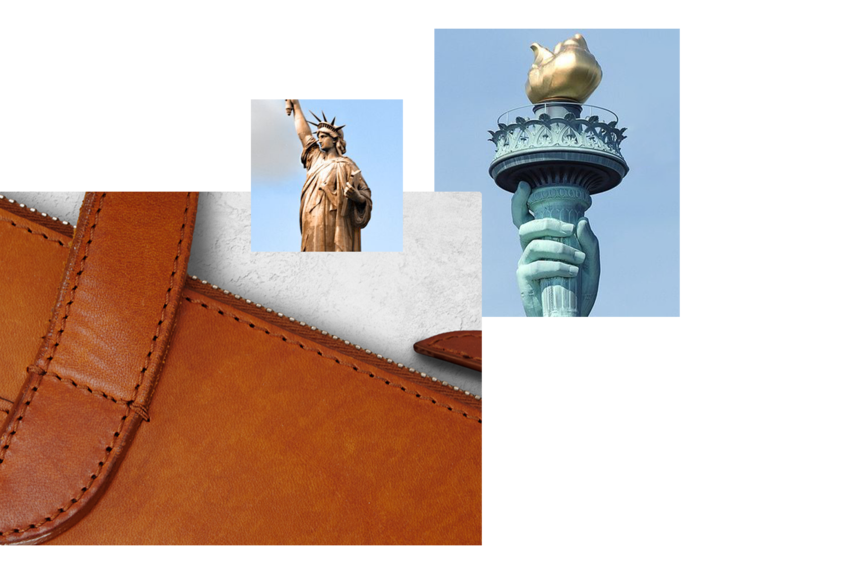
How does patina leather develop?
Natural leather is an organic material that ages gracefully over time. The development of patina is dependent on a range of factors (listed in greater detail below) that roughly fall into two larger categories: how the leather is used and the climate.
The type of leather displays a patina ‘breathes’ — meaning that it absorbs moisture and oils from the atmosphere or through being handled. Think of premium leather goods that frequently come into contact with human skin, like briefcases, card holders and belts; they gradually accumulate dirt and body oils, and are exposed to elements like sun and rain — all of which alter their appearance.
Interestingly, each variable makes a different stamp on leather. Rain can lead to water marks and sunlight encourages a golden hue to appear, for example.
Here are the main variables that influence how patina develops on leather:
- Exposure to heat
- Exposure to sunlight (UV radiation)
- Oils from the human skin
- Rain or moisture
- Denim dye
- Wear and tear, such as scratches
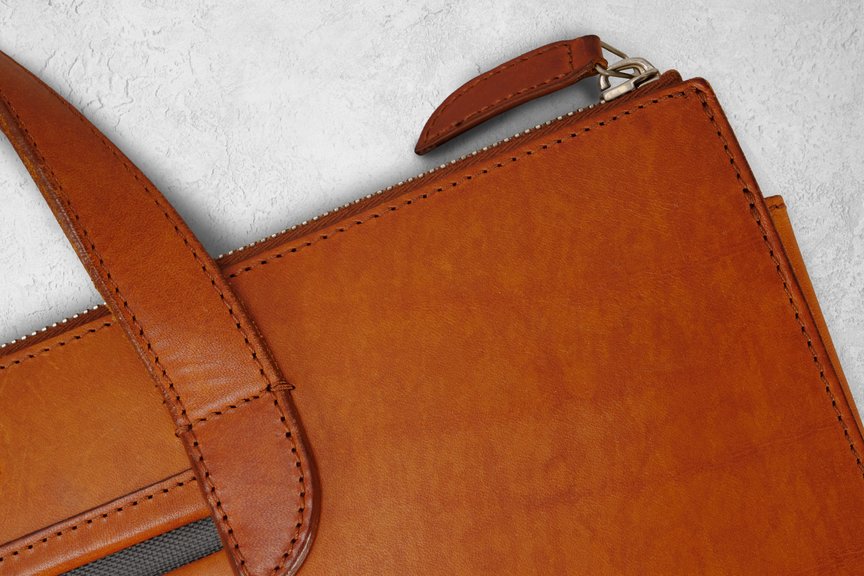
Why is leather patina do desirable?
Much like Scotch whisky slowly maturing in an oak barrel, high-quality leather only improves as it ages and weathers. Anyone with a keen interest in leather will tell you that the patina look is desirable — something that enhances the perceived value of a product. In our opinion, the romanticisation of patina boils down to three main ideas.
Visual appeal
Aged leather has a distinctively vintage look that is highly sought after. This association with authenticity and timelessness gives leather patina much of its clout.
Freshly produced leather items are beautiful in their uniformity, but they acquire unrivalled aesthetic appeal through the appearance of imperfections and the emergence of distinct colours.
A frequently used cognac leather bag is likely to take on a deeper, richer complexion over the years. It is partly this evolving sense of character that we find so endearing.
Indicative of premium leather
Part of patina’s attraction is that it is also a visual indicator of high-grade leather. More on this later, but in essence, only leather taken from the outermost layer of an animal’s skin, the strongest — and most expensive — part of the hide, will go on to develop a natural leather patina.
High-quality leather also takes on a number of beneficial physical attributes as it ages. Patina provides a protective layer that augments durability and also makes certain leather goods softer to touch.
Each patina tells a unique story
Patina is also a reflection of the individual because it responds based on how you use your leather goods.
Picture a well-worn leather wallet. It’s bound to be darker at the edges, where it comes into regular contact with your hands and absorbs the skin’s natural oils. Perhaps its exterior shows some scratches — the result of rubbing against car keys in your jean pockets, or maybe there’s a nick in the surface from when you dropped it while running for a train. You store the wallet inside a valet tray on your desk: because it’s exposed to rays of sunlight throughout the day, it has also developed a tan in places.
In essence, leather patina paints an idiosyncratic picture. No two of our Swanfield leather wallets will appear the same after 5-years of use. And this is something we celebrate. Check this article's hero image for an example of how Swanfield wallet develops an attractive patina with time.
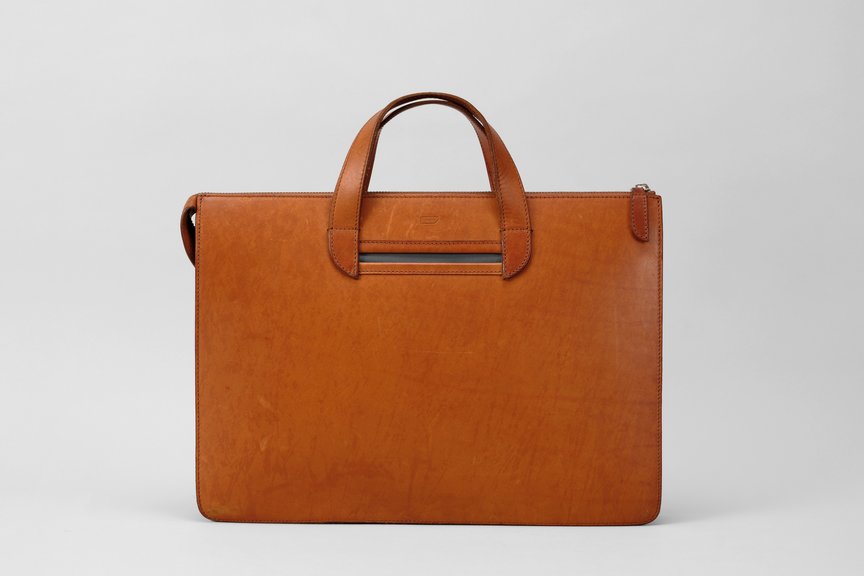
Do all leathers form a patina?
The simple answer is: no. There are four main types of leather: full-grain, top-grain, corrected grain and genuine leather, but only the two highest grades (full-grain and — to a considerably lesser extent — top-grain) will exhibit patina.
Another consideration is the tanning method. Vegetable-tanned leather will show a patina, but chrome-tanned leather will usually not.
Types of leather display a patina
Full-grain leather is taken from the uppermost layer of an animal’s hide. Imperfections — like scars, wrinkles or bites — are never altered, so the grain layer is left intact. This ensures durability and also permits the leather to breathe. The latter point is crucial, because the leather can absorb natural oils and moisture, both of which contribute to the patination process.
Top-grain leather does not represent the highest quality of leather available. Although it is taken from the top cut of the hide, the grain layer has actually been corrected.
Tanneries sand and buff away the grain to remove perceived imperfections and create a uniform material. One consequence is that the pores of the leather become sealed. This inhibits the material’s ability to breathe and subsequently slows down the patination process.
Top-grain leather is often incorporated into designer handbags, where a mixture of aesthetic consistency and resilience is required from the leather.
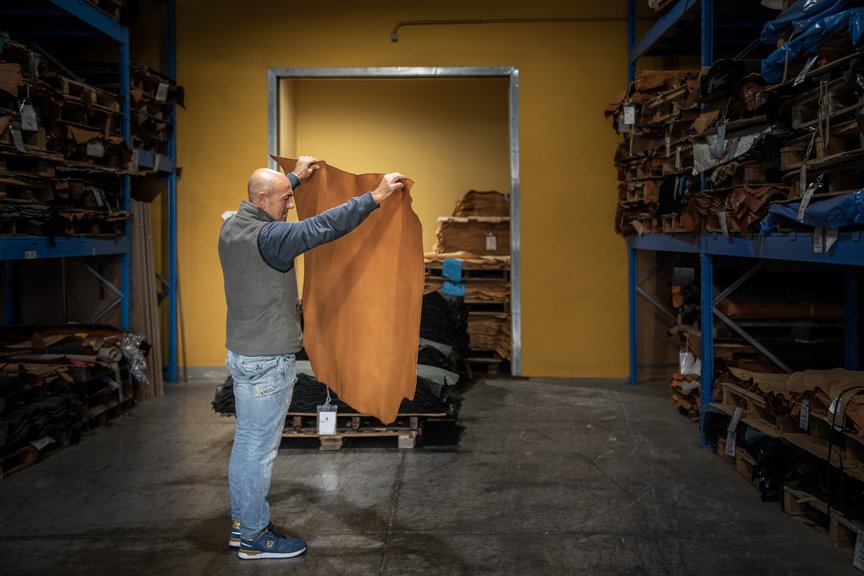
The tanning method also affects patina
Tanneries use a variety of chemical compounds to turn animal hides into leather. Vegetable tanning — a traditional technique dating back thousands of years — makes use of natural tannins that occur in bark. In contrast, chrome tanning was established in the 19th century and primarily utilises chromium sulphate as an agent.
Chrome-tanned leathers are always dyed and given heavier finish coatings. These synthetic blankets help to achieve the right look and feel, but they also render the leather impermeable — and often unable to form a patina.
Vegetable-tanned leather has no synthetic coatings. It is less processed and more natural — and will develop a rich patina as a result.
At Carl Friedrik, we use full-grain vegetable-tanned leather: the best grain and tanning combination available (in our view). This ensures that our leather goods are not only resilient and have a beautifully natural appearance, but are primed for patina.
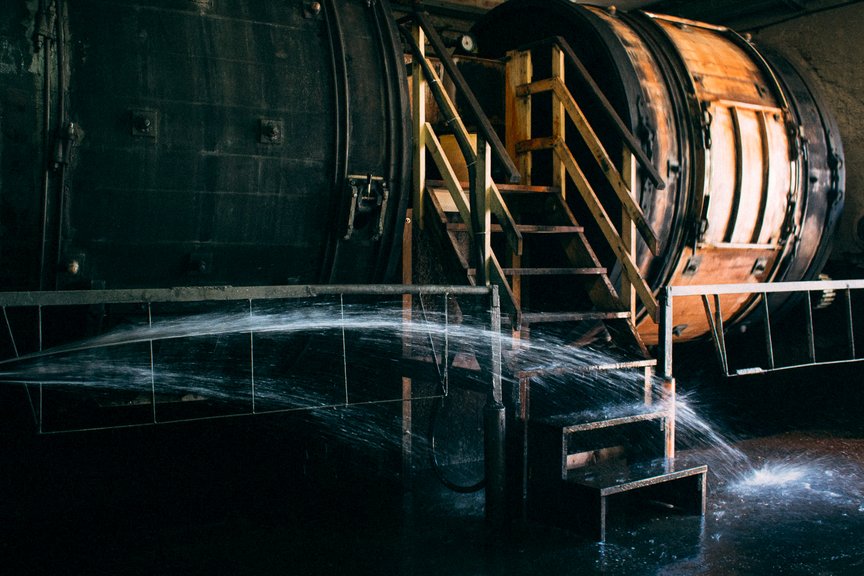
How to patina leather faster
Signs of patina could emerge within a week, a month or even a year. The change is gradual and often only self-evident when you look at ‘before and after’ pictures.
Patience is a virtue — but for those eager to accelerate the process there’s one foolproof solution: frequent use.
Remember that high-quality leather products are made to last. So, subject your leather bag to the elements. A touch of rain will do it no harm; and exposure to sunlight will add greater tonal depth. Refrain from leaving it in a dust cover — premium leather deserves to be celebrated.
How to slow down leather patina
For those looking to decelerate the formation of patina, remember that it is an organic process that can only be hastened to a degree.
Aside from being extra careful when handling your leather goods and avoiding the elements wherever possible, regular cleaning and conditioning is a great option. A leather cream (such as Carl Friedrik's Leather Cream) can help to repel scratches, dirt and moisture; organic waterproofing spray shields against watermarks.
Another alternative is to apply a leather sealer or carnauba wax. These products form a protective layer around leather, preventing moisture and dirt from seeping into the surface.
Although we advise against combating patina (it’s a marker of quality and beauty, after all), the decision is ultimately yours.
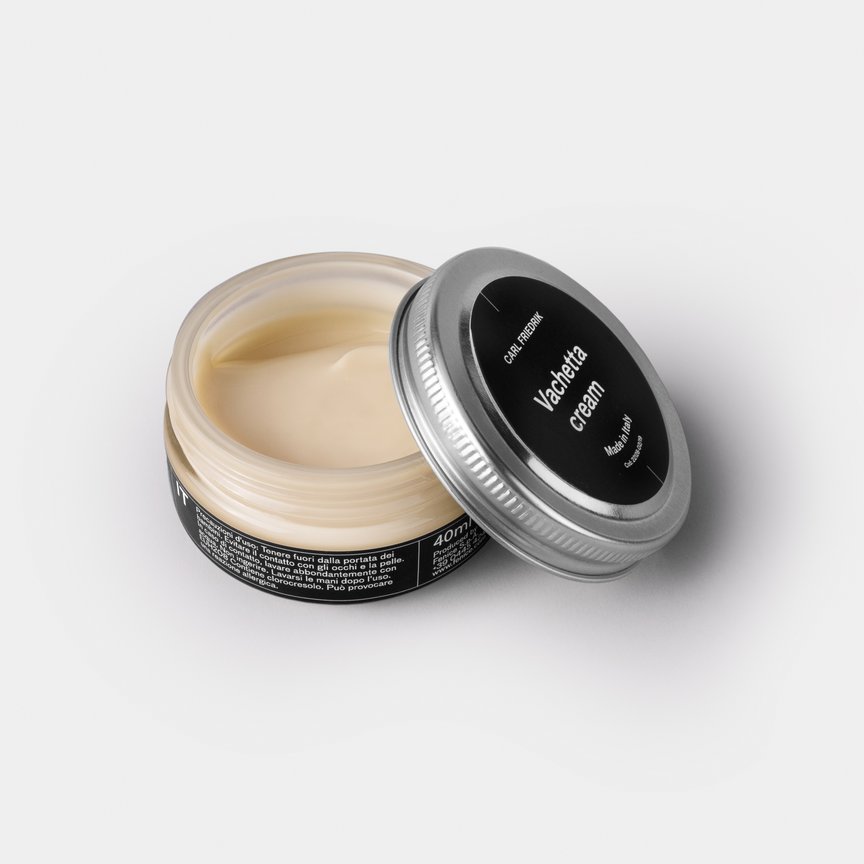
Does patina affect the durability of leather?
Given that patina is essentially a byword for the ageing process of quality leather, it's logical to wonder if a blossoming patina will impact the durability of your product.
Thankfully, it won't. In fact, premium leather — such as the variety Carl Friedrik uses — tends to strengthen over time if cared for well. Full-grain leather, for example, can last up to five times longer than other fabrics.
Takeaway
There you have it, a deep-dive into the topic of leather patina. And with your newfound knowledge, you’re now better equipped to navigate the wonderful world of ageing leather goods.
What is leather patina?
+
Does real leather patina?
+
Does black leather patina?
+
How to patina leather?
+